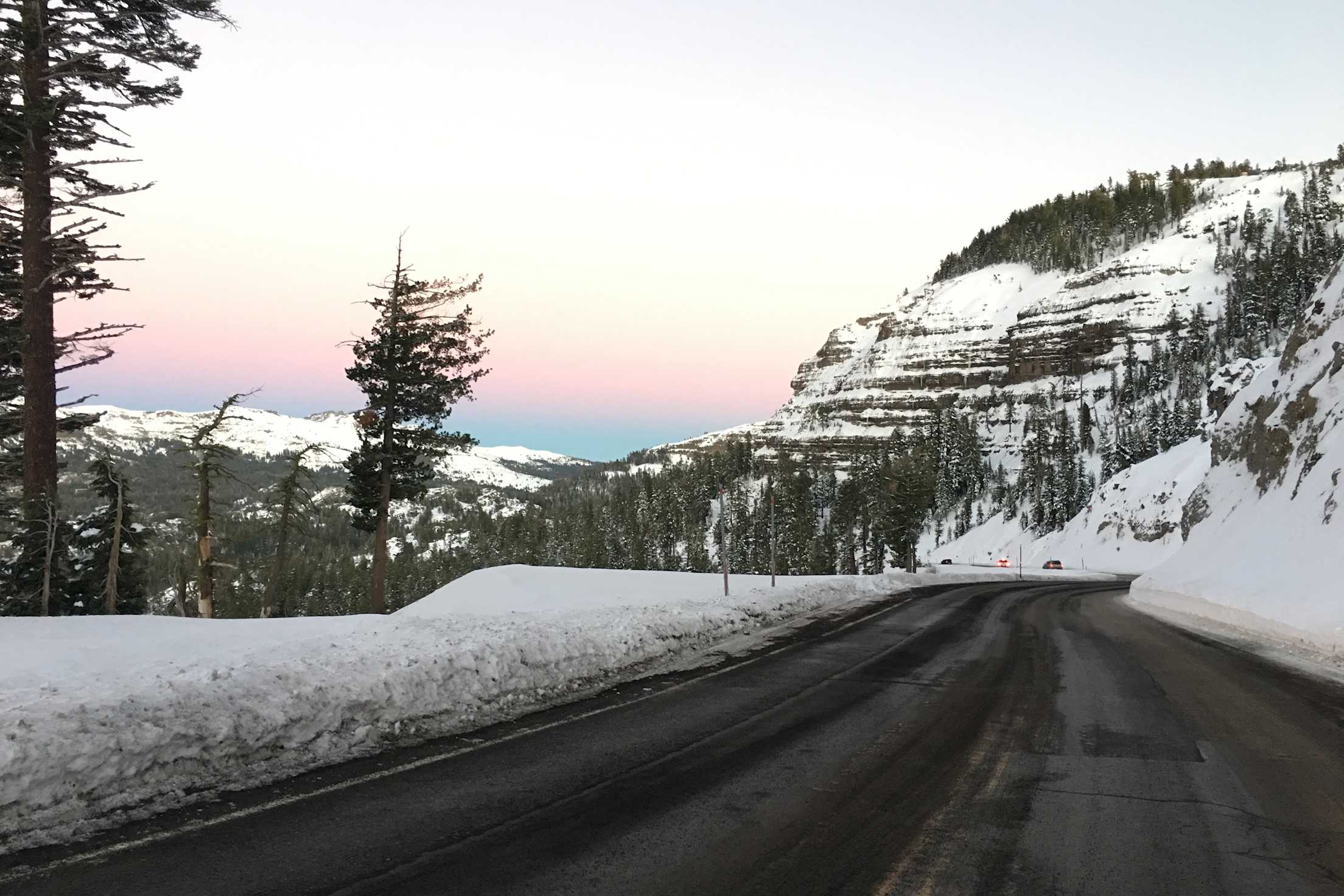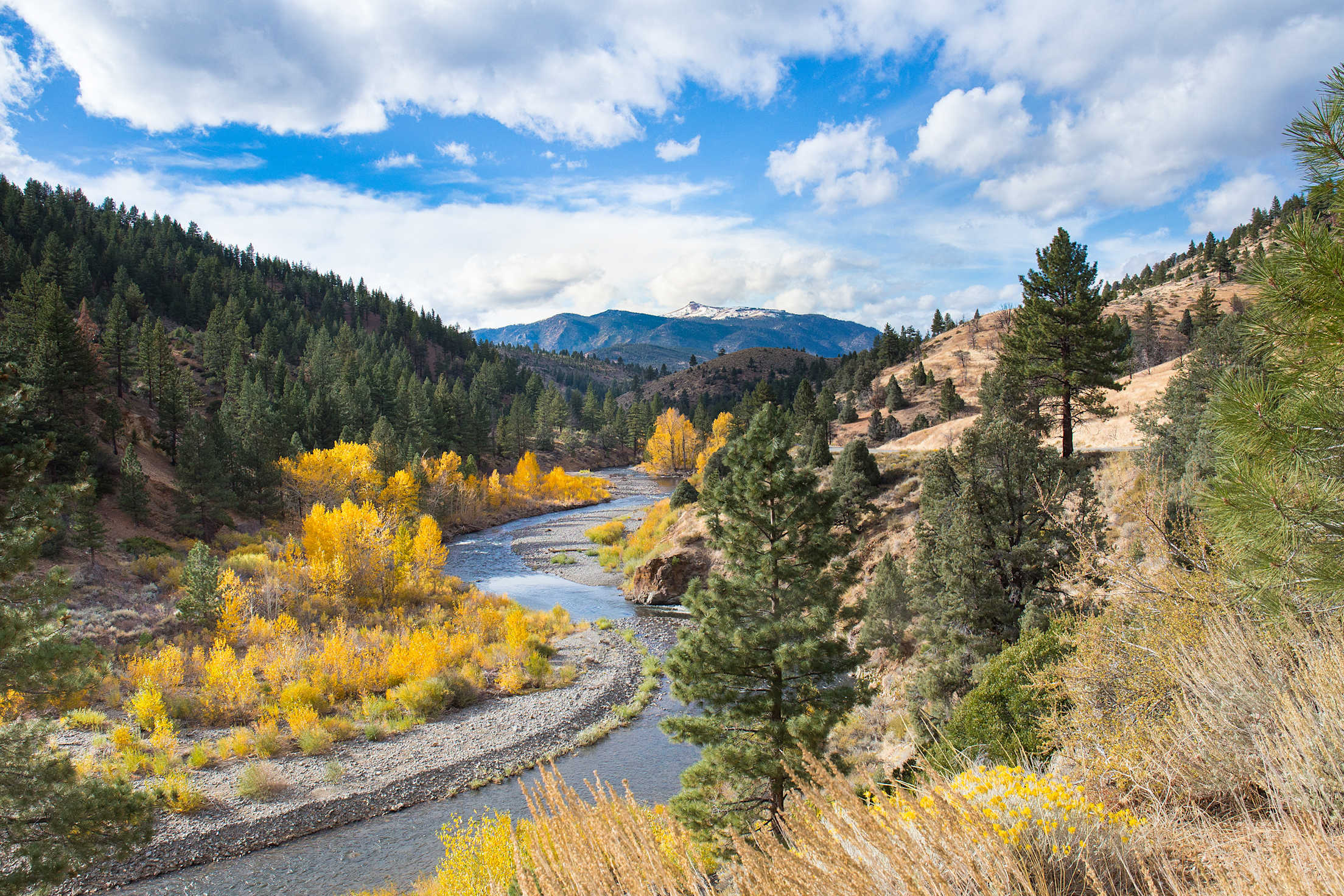
Hope Valley: A Sierra Nevada Secret Hideaway
Hope Valley boasts Caples Lake, Sorensen's resort, hot springs, and a string of Western towns.

In nearly every piece of literature on Alpine County is a reference to the fact that it is the least-populated county in all of California. This would not be such an unusual statistic or one even worthy of mention, unless you consider that Alpine County is less than 20 miles from the tourist beehive of South Lake Tahoe.
I read this little census tidbit to my husband as we drove busy Highway 50. Looking at the map, we saw that the gateway to this roomy county, an area named Hope Valley, was barely a bean's length from the bright lights and big price tags of Tahoe's South Shore. But as we turned off at Pollock Pines, where the rest of the world begins to form a conga line for the casinos, condos, and ski resorts, we suddenly found ourselves on the road less traveled, and it was as if we had entered a parallel Sierra universe.
We soon discovered that Hope Valley and its Nevada neighbor, Carson Valley, have many of the same assets that lie on the other side of the mountain: a pristine alpine lake, historic Western towns that grew up along the Emigrant Trail and Pony Express route, and snowy peaks and verdant river valleys to delight and challenge all manner of outdoor enthusiasts.
They also have a few things that their famous neighbor doesn't: natural hot springs; high-desert chaparral abutting craggy ridges; roads free of traffic jams and—come to think of it—traffic lights; many wide open miles of cross-country ski trails; and a bar in a town that claims to be the first permanent settlement in Nevada.
Snow had begun to fall softly as we approached Caples Lake, which is nestled in an alpine bowl surrounded by pine forest. The lake has turquoise waters similar to Tahoe's but without the speedboats and surrounding rows of gated communities. Though it usually freezes over by January, Caples still attracts a winter tribe who park themselves at the rustic cabins located at the lake's southwest end to take advantage of proximity to Kirkwood Mountain Resort 1.5 miles up the road.

Carson Pass Scenic Byway covered in snow.
Just past Caples Lake, we crested Carson Pass—at 8,652 feet, one of the highest of the Tahoe area summits—and rolled down into the Hope Valley basin, where the whole mountain seemed to exhale, taking on a softer, gentler demeanor that carried all the way to the only working radio station we could find: KTHO, soft-rock hits of the '70s and '80s.
Our first stop was Sorensen's, the Scandinavian-style resort opened in 1926 that has been owned since the early '80s by John and Patty Brissenden. The Brissendens, we learned, are part of the reason for Alpine County's sparse population (around 1,100 at last count). Some 30 years ago they fought and won a battle, along with their neighbors, to set aside a large swath of this wilderness as protected public land.
"This land has dodged the bullet so many times," says John in Sorensen's cozy café. In the 1960s, some of the Kennedy family had an eye to building a ski resort. Later, a developer wanted to build a snowmobile concession. The Brissendens raised $350,000 in six days and fixed up the rundown Hope Valley Resort on what had become federal land. Today it operates as Hope Valley Outdoors, a winter yurt and hub for cross-country skiing and snowshoe lessons.
At Sorensen's, 31 cabins serve as home base for activities that range from skiing, snowshoeing, and sledding on runs groomed by children's backsides to fly-fishing, leaf peeping (the area is famous for its quaking aspens), mountain biking, and guided history hikes. In winter, some folks never venture much farther than the wood-fired sauna. At some point, however, almost everyone finds their way to a bowl of beef burgundy stew (available at breakfast, lunch, and dinner) and a serving of fresh berry cobbler.
We settled in at Sierra House, one of the larger, more modern cabins. Those who prefer the classic mountain log-cabin experience usually opt for Snowshoe, Creekside, or Sheepherder. Top prizes for cuteness definitely go to the Chapel and Saint Nick's, two whimsical little A-frame chalets that would feel right at home at the North Pole.
That afternoon, as we tromped through the woods with nary a car horn or howling coyote to disturb our reverie, we wondered if this was some Sierra Shangri-La—a paradise, all but forgotten by the commercial interests that long ago co-opted the shores of Lake Tahoe.

The Carson River flows through Hope Valley in fall.
The next day we stopped at Hope Valley Outdoors to visit Joyce Coker, aka the Cookie Lady, famous for her one-pound chocolate-chip cookies and her black-and-blue pies, and for getting just about anything with two legs up on skis. "This area lives literally and figuratively in the shadow of Lake Tahoe, and that's just the way we like it," she said, stirring cookie dough with one hand and black-bean chili with the other, then dropping everything to run across the café to fit a 4-year-old into skis.
We packed a chocolate-studded one-pounder into our knapsack before heading down the road to Markleeville, the county seat. Within minutes the snowy peaks gave way to dusky desert sagebrush.
Markleeville's saloon, earthy coffeehouse, rustic resorts, and handful of restaurants call to mind the Truckee that might have been had the railroad never come through. Jacob Marklee, who built a toll bridge across what became known as Markleeville Creek in 1862, hoped to cash in on miners heading to Silver Mountain City, but instead met an untimely death in a gunfight. Eventually, Markleeville settled for status as a ranching and lumber supply town and a tourist hub.
Cutthroat Saloon & Restaurant is a down-home eatery and cowboy watering hole, and a staple of Markleeville's main strip along California Highway 89. Nearby Stonefly is a white-tableclothed establishment with an extensive menu of fresh salads, classic meat-centered entrees and creative pizzas that fluctuate seasonally. Stonefly is open on Friday, Saturday and Sunday nights only.
The sight of steaming, soothing waters spurred us on to the first of two wonderful hot springs in the area. At Grover Hot Springs State Park, a few miles from Markleeville, skiers, cyclists, and snowbirds alike converge to take the curative mineral waters that bubble out of the ground at 150 degrees before being channeled into a 104-degree pool. Open year-round, Grover is low on luxuries but big on natural scenery and, as we soon discovered, is a magical spot in the middle of a snow flurry.
After a long soak and a quick dip in the cold plunge, we crossed the state line, passing through the twin cities of Minden and Gardnerville on our way to Genoa (juh-NO-uh). Sitting on a plateau at the base of a grade that is only 17 miles from Heavenly Mountain Resort, Genoa is as rich in Victorian architecture and historical landmarks as it is short on square footage.
This tiny Western relic, in fact, claims both the oldest "thirst parlor" (the still-operating Genoa Bar) and the oldest permanent settlement in Nevada; a replica of Mormon Station, the original trading post established by emigrant John Reese in 1851, can be visited year-round, even if the museum is only open to the public from May to mid-October.
A statue in Mormon Station State Historic Park commemorates Genoa's other claim to fame: It is the final resting place of legendary mailman and mountain rescuer Snowshoe Thompson. From 1856 to 1876, John A. Thompson (formerly Jon Torsteinson-Rue) traversed the rugged mountains between Placerville and Genoa on homemade skis, lugging 50- to 100-pound mailbags on his back. A native of Norway, Thompson spent his last years near here and is buried in the cemetery at the edge of town.
Thompson is not the only celebrity to have found his way to this Nevada outpost. Ulysses S. Grant, Teddy Roosevelt, and Mark Twain all sought the curative waters at David Walley's Hot Springs Resort up the road. Built in 1862 by David and Harriet Walley at a cost of more than $100,000, the resort catered then, as now, to a more well-heeled clientele, many of whom had made their fortunes in the nearby silver mines. Though not much is left of the original hotel and spa (which included a ballroom, restaurant, stables, and bathhouses), the resort's modern luxuries—a spa with all the amenities, an upscale steak-and-seafood restaurant, Jacuzzi tubs, and suites with full kitchens—seem in keeping with Walley's vision.
As we lounged in one of six hot pools under a high-desert moon, with nothing to block our view but miles of sagebrush and juniper, we contemplated the fact that a bean's length can put you both a few miles and an entire world away.